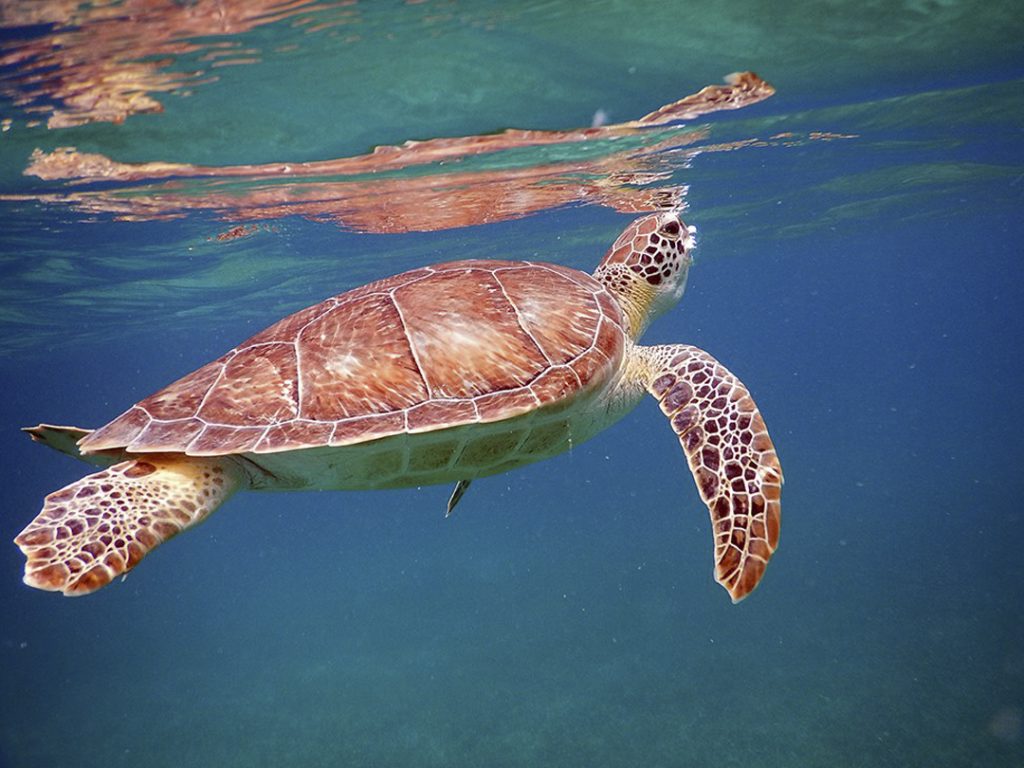Coral diseases-how they harm our oceans and what to do to protect them
June 23, 2021
Learn about ocean and coral reef conservation
and what Grupo Xcaret is doing for this cause
Coral reefs are an extremely beautiful ecosystem creating marvelous marine landscapes. There is an incredible variety of approximately 6,000 species of corals worldwide and Mexico alone is home to 10% of their population located at the bottom of the Pacific, Gulf of Mexico, and the Caribbean Sea. In fact, our country, specifically the Caribbean, shares the second largest barrier reef in the world, the Mesoamerican Barrier Reef System along with Belize, Guatemala, and Honduras.
Corals are not only beautiful, but they are also a very important part of both the aquatic and human world, since they have the function of being efficient protectors of the coasts against erosion and strong waves, as well as being helpers against tropical storms and hurricanes. Corals are also the habitat of diverse marine species, approximately 25% of all marine life depends on them, giving them adequate space to develop their lives, especially those that provide food and sustenance to the Mexican population.
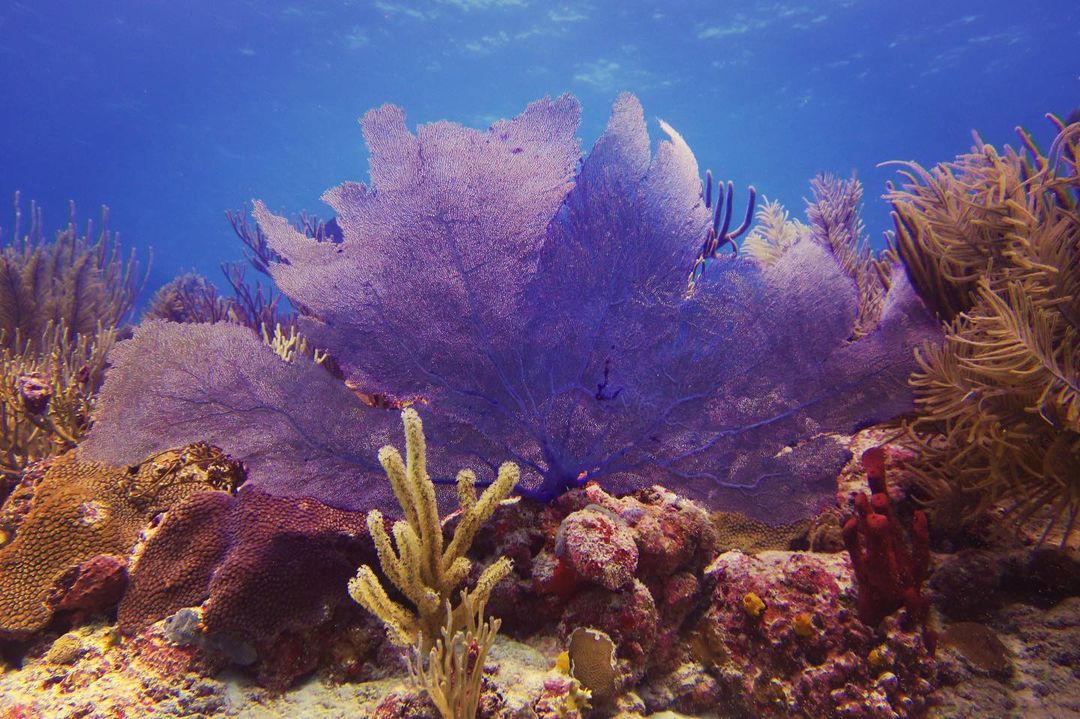
The importance of coral conservation is clear, currently, more than 10% of the world’s reefs seriously deteriorate. This damage has been caused by many factors, mainly anthropogenic, such as physical destruction due to ships or construction of quarries, toxic waste spread in the sea, fishing, and exploitation of corals. However, one of the worst effects of negligent human activity is coral bleaching, ocean acidification, and tissue loss syndrome.
Let’s talk about coral bleaching
Coral bleaching causes, as the name says, the loss of the beautiful colors in the coral, leaving it as a blank canvas. These bright colors exist due to microscopic algae called zooxanthellae. They live inside the coral and have a relationship where they help each other survive in the environment. The zooxanthellae provide oxygen and energy, as well as helps the coral to eliminate waste, while the coral offers a protected and safe environment for photosynthesis, which also helps the coral by providing food.
With this information in mind, a link can be made to the fact that thanks to the increase of temperature in the ocean, corals expel such algae causing the colors to fade, exposing their original color of the underlying calcium carbonate structure of the polyps, meaning white. This discoloration causes the coral reefs to die and leads to increased vulnerability to other threats to the survivors with the disease. As long as the planet’s temperature remains at a high level, the ocean’s temperature will cause the coral to continue to reject the algae. In addition to causing them to die, these high temperatures affect their reproductive and growth capacity. Corals are very sensitive to temperature changes, they can only live in waters between 18 and 30 degrees Celsius, and an increase of just 1 degree Celsius can cause coral bleaching.
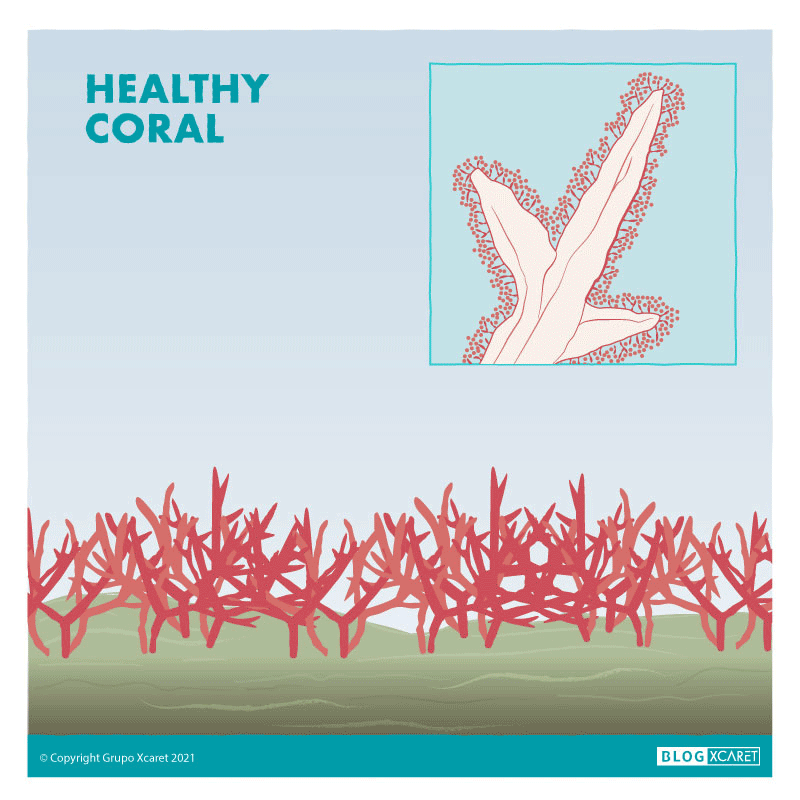
What is ocean acidification?
On the other hand, ocean acidification is the change in the proportion of carbon dioxide in the oceans. The amount of carbon dioxide in the atmosphere is in harmony with the amount in the seawater, so when the amount in the atmosphere increases, the amount in the ocean will do the same. Now, the excess carbon dioxide in the ocean reacts and forms carbonic acid, which increases the acidity.
Annually, the oceans absorb about a quarter of the carbon dioxide emitted by burning fossil fuels such as oil, coal, and natural gas. Since 1760, the acidity of the oceans has increased by 30%, a tenfold increase over millions of years. Unfortunately, by the end of the century, acidity levels in the oceans are projected to increase by a further 40% over current levels.
But how does this phenomenon affect corals? Increased acidity is linked to lower pH values, thus reducing the availability of salts and dissolved ions that corals need to form the calcium carbonate structure. Consequently, coral reef growth slows down.
If acidification worsens, coral skeletons may dissolve completely.
What do you mean by tissue loss syndrome?
Coral tissue loss syndrome is a lethal disease that has spread rapidly in the oceans causing a high mortality rate in coral reefs. It is possible that the disease is caused by bacterial pathogens spreading to corals through direct contact and water circulation.
As the name implies, corals lose their tissue, leaving their skeleton bare, causing their death in a very short period of time. The loss manifests as a rapidly expanding white ring or patches. The disease radiates outward killing the coral, detaching all its tissue causing it to be colonized by sediment or algal mats.
This should not be confused with coral bleaching, as the latter is a response to stress mainly caused by increased water temperature.
How do coral diseases affect the ecosystem?
It is necessary to emphasize that coral bleaching, tissue loss syndrome, and ocean acidification are not the only phenomena affecting coral reefs. Rising sea levels, tropical storms, their intensity, and altered circulation patterns are also negatively impacting corals.
However, these diseases are not something to be taken lightly, because once the process is complete it is unusual for them to regenerate. Coral reefs are home to thousands of marine animals such as various species of fish, crabs, sea turtles, jellyfish, starfish… To make a long story short, these colonies are inhabited by a large amount of aquatic biodiversity. It is an area where these animals are protected from predators, but as the corals deteriorate, the animals would be left without a safe space in which to live.
Also read: Coral reefs in Cancun

The above was how it affects the animal world, as for the human world, corals serve as a natural barrier against the strong sea waves that hit the coast, helping to make them safer. Therefore, by ending the life span of corals, it leads to the alternative of humans having to build such barriers and further damaging the environment, as well as being less effective. On the other hand, as there are no living reefs, the fish have nowhere to spawn and develop, so fishing is affected, and with it the economy of the place and the food sustenance of the people in the surrounding area. Not to mention one of the sectors with the highest income in Mexico: tourism. Coral reefs are related to the growth of tourism due to all the demanding aquatic recreational activities such as snorkeling to see the beauty of the corals.
Would you rather see a cemetery of corals or a spectacle of magnificent colors?
What can we do to protect corals?
As tourists, when vacationing there are several ways to help coral conservation:
1.-Go scuba diving with trained people and safe equipment. Corals are a “look at me and don’t touch me” kind of species. It is important not to touch them, as they are very delicate. It is advisable to keep your distance and enjoy the view.
2.-Use biodegradable sunscreen. There are ingredients in sunscreens that can damage the marine environment. Sunscreens with zinc oxide or titanium oxide are more harmless. To learn more about proper sunscreen use check out our article All about responsible sun protection.

3.- Dispose of trash properly. At home, at the beach, basically everywhere. Make use of the famous three “R’s” (Reduce, Reuse and Recycle). Also, when disposing of garbage, do it in the appropriate containers, not on the ground or worse yet straight into the ocean.
4.- Make noise. You need to make people aware of the problem that is happening. Seek to inform yourself even more about coral reefs, involve society. The more people are concerned and willing to help, the faster the problem will be eradicated.
What is Grupo Xcaret doing to help coral conservation?
Since 2020, Grupo Xcaret Aquarium together with the National Fisheries Institute (INAPESCA) and the Autonomous University of Mexico (UNAM) are involved in a project to eradicate the tissue loss syndrome. One of the priority actions identified was the creation of a genetic bank of coral gametes for the storage and cryopreservation of live material.
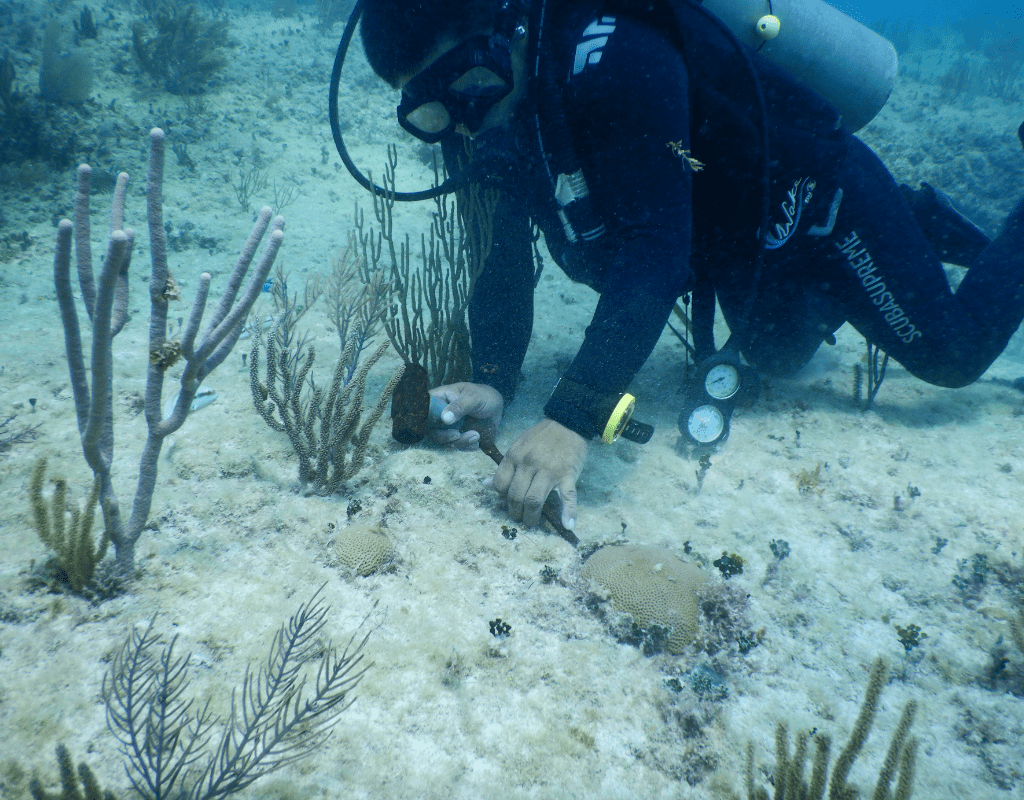
Currently, Flora, Fauna, y Cultura de México AC, together with the Aquarium of Grupo Xcaret, INAPESCA, and UNAM, have been invited to reinforce and expand the following actions:
- As previously mentioned, the collection of gametes to make artificial reproductions of various species of corals.
- The creation of genetic banks by collecting healthy corals, taking efficient care of them, and once they spawn, the gametes are collected in order to continue with the coral reproduction program.
- Treatment is applied by rescuing bleached colonies to be transferred to a coral farm and thus initiate the use of different treatments on a small scale to treat the disease and achieve recovery.
- Environmental education is essential for the care of corals and to know the current situation of our oceans. Provide reliable information about the different responsible actions and participate in protection programs.


Research continues on the appropriate treatments to eliminate this marine killer that is destroying the beauty and life of coral reefs. Alliances between different institutions and sectors are essential to address this disease in a comprehensive manner.
It is important not to stay behind, small actions can make big changes in our environment. Truly, global action is needed to solve the problem of global warming, and thus avoid the extinction of coral reefs. By the end of reading this article, you have completed the first step to make a change. Now it’s time to continue researching, getting involved in the action plans that the country has to solve this problem. You have the means to make a difference, the question is, do you want to do it?
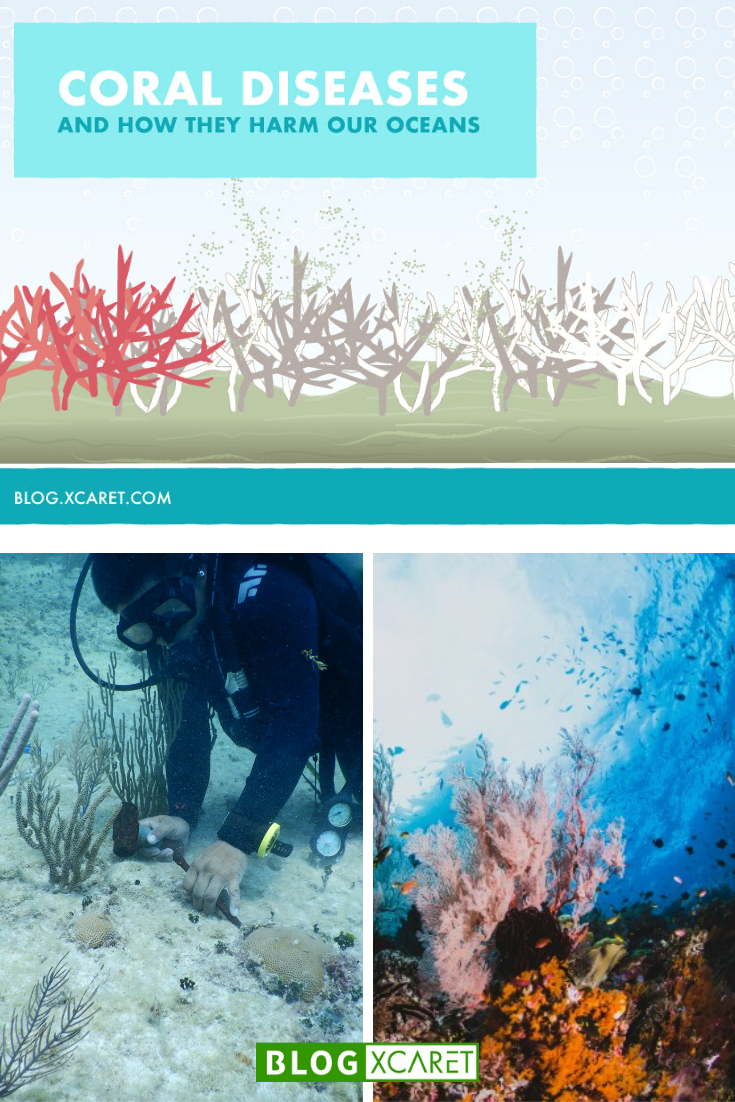
Share this article and help spread the word about coral conservation.

Editora de Blog Xcaret. Comunicóloga que ama viajar, escribir, tomar fotografías y estar siempre rod...
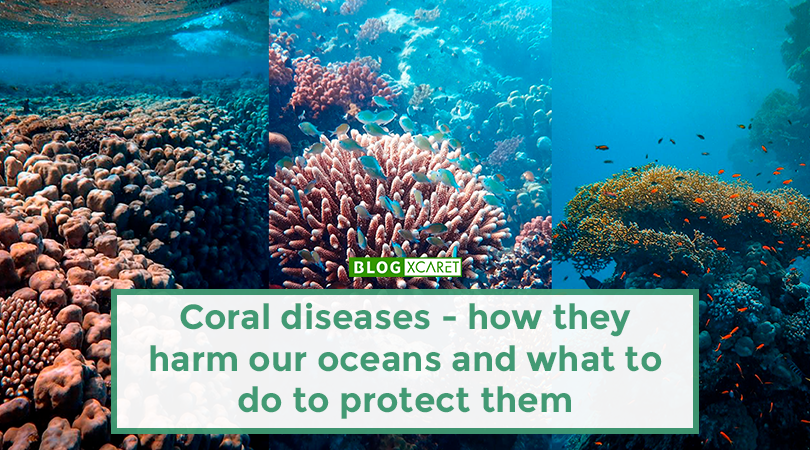
Posts Relacionados
Grupo Xcaret
Hotels
